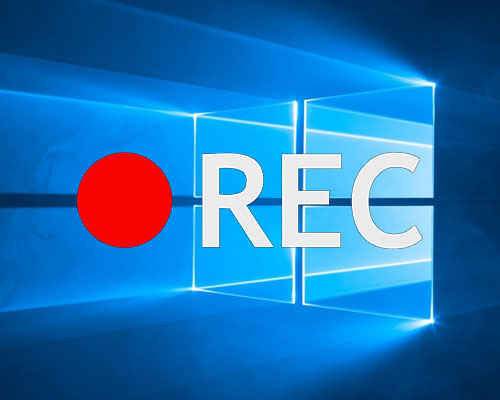How to record your computer screen in Windows 10
 It’s true, collaboration is no longer confined to the buildings where we work.
It’s true, collaboration is no longer confined to the buildings where we work.
With flexible and remote working really starting to find its feet, businesses and their employees are finding increasingly resourceful ways of working together. You don’t even need to be in the same room.
A particularly useful tool in this modern working world is an ability to record your computer screen as a video. You can provide commentary over the top, should you wish, to describe in detail what’s happening. Once you’re done, you can save your recording and send it to a colleague.
When might you put an idea like this into operation?
You could create a tutorial for yourself or a colleague, demonstrating exactly how to use a certain program. On the other hand, you might find you need to report a technical issue to your IT department, but would prefer to show them the problem instead of attempting to describe it over the telephone and risk further confusion.
Today, we’ll take a look at two techniques you can use to record your computer screen in Windows 10. Make sure you have enough free disk space to record and save before you start.
How to record with Xbox Game Bar
The most straightforward way to record what’s on your screen is through the Xbox app already installed on your machine. Its primary purpose is to record video games – a niche that’s booming on platforms like YouTube, where the videos often receive millions of views. In this instance, why not try using the Xbox app to record a simple tutorial for your favourite app?
- First of all, type Xbox into the search box. Open up the app and keep it running in the background.
- Once you’re ready to record, press the Windows key together with the letter G on your keyboard and when prompted, choose ‘Yes, this is a game’.
- Then you can either click ‘Start recording’ or use the keyboard shortcut – Windows + Alt + R to begin capturing video and the same again to stop.
All the videos are automatically saved as MP4 files in the Videos/Capture folder. Under the Game DVR options in the Xbox app, you can tweak the picture quality and choose whether or not to record an audio overlay.
We should point out that to make use of this option, your Windows 10 machine will need a video card that supports one of these encoders: Intel Quick Sync H.260, Nvidia NVENC, AMD VCE. If your PC or laptop doesn’t meet the requirements, you might like to try using PowerPoint to record your screen instead.
How to record with Microsoft PowerPoint
With the 2013, 2016, 2019, or Office 365 versions of PowerPoint, you can use its in-built functionality to record your computer screen.
- Open PowerPoint, select Insert from the menu at the top and then Screen Recording.
- Select Area lets you choose the section of your screen you wish to record. Want to record the entire screen? Just press the Windows key together with Shift and the letter R on your keyboard. Then click Record and you’re away.
- Pause will temporarily stop the recording while Stop ends it altogether.
You can then either embed the video in your current PowerPoint presentation by choosing File > Save, or save the recording as a separate file. To do this, right-click the image in the slide that represents the recording you have just made and choose Save Media As.
Could your business benefit from Office 365?
At Clearwater IT, we can help your business benefit from the power of cloud computing with Microsoft Office 365, enabling your team to collaborate wherever they are.
If you’re interested in exploring our on-going support packages, please contact us. Packages start from just £20 per user, per month, and we’ll be more than happy to discuss how we can meet your requirements.
If you enjoyed this article and would like to read more – why not sign up to our mailing list? You'll receive all our best advice, straight to your inbox.